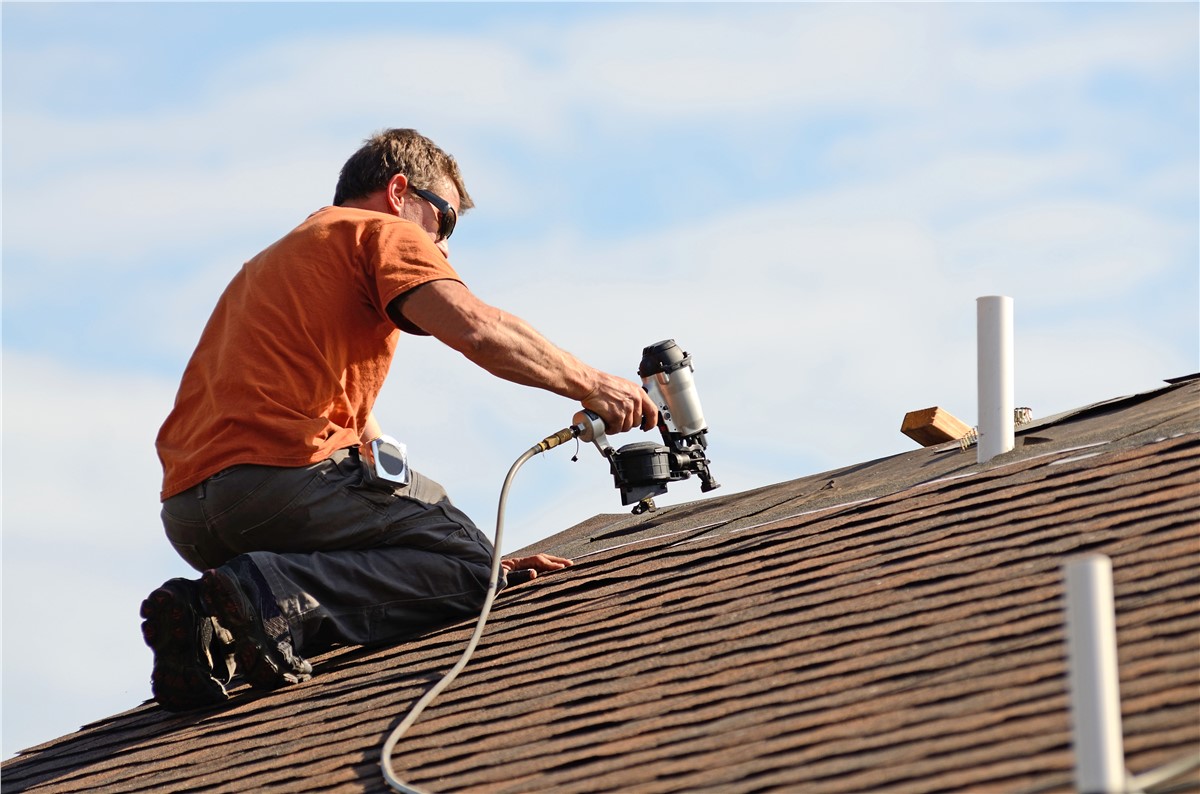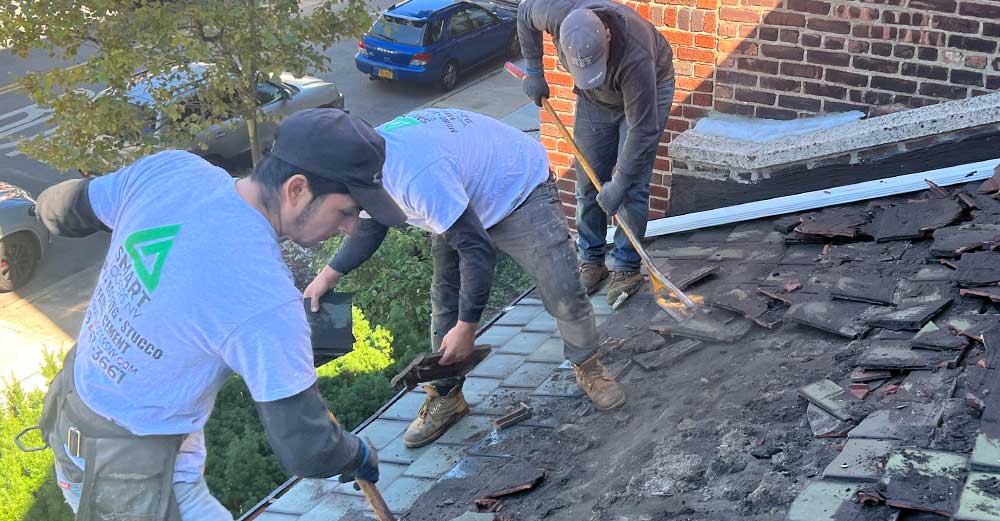Roofing Companies Oahu: Top-Rated Roofers for All Roofing Projects
Roofing Companies Oahu: Top-Rated Roofers for All Roofing Projects
Blog Article
A Homeowner's Overview to Kind of Roofs: Picking the Right Style for Your Demands

Popular Roof Covering Styles
When it comes to selecting a roof design, property owners commonly consider their alternatives thoroughly to make certain both visual allure and capability. Among the most prominent styles are the gable, hip, and flat roof coverings, each offering visual characteristics and unique advantages.
Saddleback roofs, characterized by their triangular shape, are favored for their basic design and efficient water drainage. This style is especially fit for regions with heavy rainfall or snow, as it lessens the risk of water pooling.
Hip roofings, which slope on all four sides, provide additional stability and toughness, making them an outstanding option for areas prone to high winds. Their building intricacy permits greater style convenience and can enhance the total aesthetic appeal of a home.
Level roof coverings supply a modern-day visual and make the most of usable outside area, making them preferred for city setups. While they require more upkeep to avoid water build-up, their smooth look can match modern style.
Ultimately, the choice of roofing system style must reflect the property owner's individual taste while considering aspects such as local environment, architectural design, and prospective resale value. Each style adds distinctively to a home's total personality and performance.

Material Options
Choosing the ideal roofing system product is equally as crucial as choosing the best design, as it substantially impacts the roofing's toughness, maintenance demands, and overall aesthetic. roofers oahu. Home owners have a range of options to take into consideration, each with distinct advantages and downsides


Metal roof covering supplies remarkable sturdiness and long life, frequently surpassing 50 years, while also being immune and lightweight to fire and rot. Metal roofing systems can be more expensive upfront.
Clay and concrete ceramic tiles offer a timeless appearance and outstanding lifespan however need a sturdy framework as a result of their weight. These products are highly sturdy and immune to severe climate problems. Timber trembles supply a rustic visual yet demand normal upkeep to avoid rot and pest damages.
Finally, artificial roof products, such as rubber or plastic composites, imitate the look of conventional products while being low-maintenance and light-weight. Eventually, the choice of roof material need to align with the home owner's spending plan, wanted life expectancy, and maintenance preferences, ensuring an ideal suit for their specific demands.
Energy Efficiency Considerations
Power effectiveness plays a vital function in the general performance of a roof, affecting both ecological sustainability and homeowner energy costs. When picking a roof covering, it is necessary to consider products and designs that enhance energy efficiency. For circumstances, reflective roofing products, usually referred to as "amazing roof coverings," can substantially minimize heat absorption, lowering interior temperature levels and reducing the need for a/c.
In addition, the roof's shade and incline can influence its power efficiency. Lighter colors typically reflect extra sunlight, while outstanding pitched roof coverings promote much better airflow, reducing warm build-up - roofers oahu. Insulation also plays an essential role; a well-insulated roofing can protect against warmth loss in winter months and keep interiors cooler in summer season, therefore improving energy financial savings
Additionally, integrating energy-efficient roof covering choices with photovoltaic panels can further lower energy prices and dependence on nonrenewable sources. Homeowners ought to also take into consideration local climate conditions when choosing roof products and styles, as these variables straight impact energy consumption.
Maintenance Needs
The longevity and efficiency of a roofing system are significantly influenced by the maintenance requirements connected with its style and materials. Different roof kinds demand differing levels of maintenance, which can influence both the homeowner's time and spending plan.
Routine cleaning of rain gutters is vital to avoid water damage and prolong the roofing system's lifespan. These roofing systems also profit from cleansing to preserve visual appeal and functionality.
Floor tile roofings, understood for their durability, demand less frequent upkeep but need cautious evaluation and replacement of damaged ceramic tiles. Flat roof coverings, although using modern-day aesthetic appeals, frequently require even more focus; they call for regular inspection for pooling water and particles elimination to prevent leaks.
Inevitably, understanding the upkeep requirements linked with different roofing designs enables home owners to make informed choices, ensuring the selected roof aligns with their way of life and dedication to maintenance. Focusing on upkeep will certainly boost the roofing system's efficiency and prolong its solution life, offering satisfaction for several years to come.
Effect on Resale Value
When thinking about a new roofing system design, homeowners should acknowledge that the choice can significantly affect the home's resale value. A well-chosen roof not just improves aesthetic charm but likewise indicates to potential buyers that the home is well-kept and structurally audio. Different roofing materials and designs lug differing levels of worth in the real estate market.
For circumstances, top article asphalt tiles are popular as a result of their affordability and wide variety of shades, typically interesting budget-conscious purchasers. On the other hand, a metal roof covering, while a lot more pricey in advance, supplies long life and energy performance, which can attract purchasers searching for reduced upkeep check my site and sustainability. Furthermore, one-of-a-kind styles such as slate or floor tile can add a touch of luxury, potentially boosting the building's value in high end markets.
Regional preferences also play an important role; homes in locations with heavy snowfall might take advantage of outstanding pitched roof coverings, while coastal areas could prefer durable products resistant to deep sea deterioration (roofers oahu). Ultimately, property owners need to take into consideration both visual appeal and functional advantages when picking a roof. A thoughtful choice ensures that the financial investment not just satisfies individual needs but likewise improves the residential property's marketability and resale capacity
Final Thought
To conclude, picking the appropriate roof covering style requires a careful analysis of different factors, including local environment, architectural style, and maintenance demands. Each roof covering option, whether it be gable, hip, or level, possesses distinct benefits and disadvantages that impact power efficiency and prospective resale value. Ultimately, an educated decision relating to roofing system selection can boost the visual appeal, capability, and long life of a home, guaranteeing it continues to be a valuable asset for years to come.
Selecting the proper roof covering design for Homepage your home is an important choice that can dramatically influence both visual appeals and performance. While gable roof coverings succeed in water drain, hip roofings might use better durability against wind.When taking into consideration a new roof covering design, homeowners need to acknowledge that the option can substantially affect the property's resale value. Ultimately, home owners should consider both aesthetic charm and practical advantages when picking a roofing.In final thought, selecting the proper roof covering design demands a cautious analysis of numerous factors, consisting of regional climate, architectural style, and maintenance demands.
Report this page